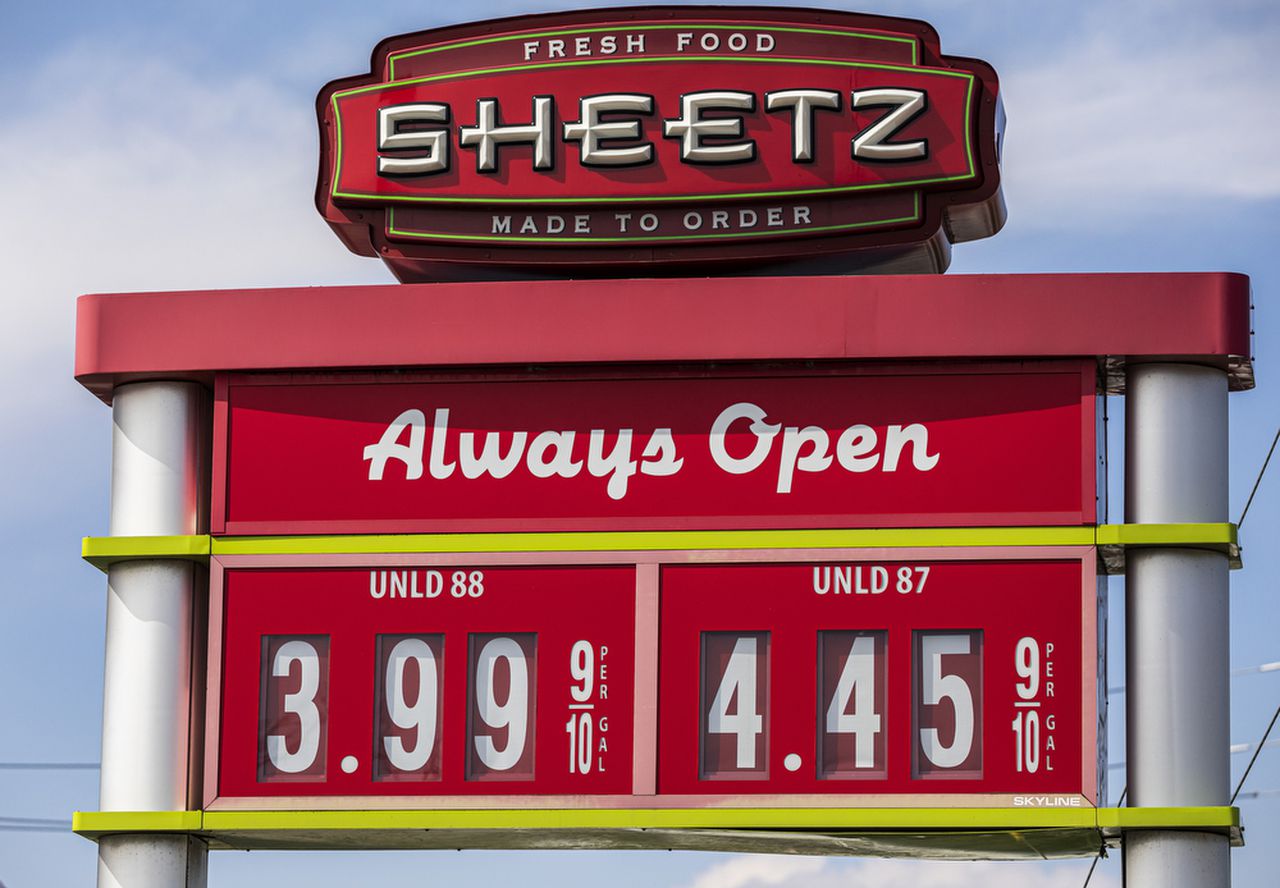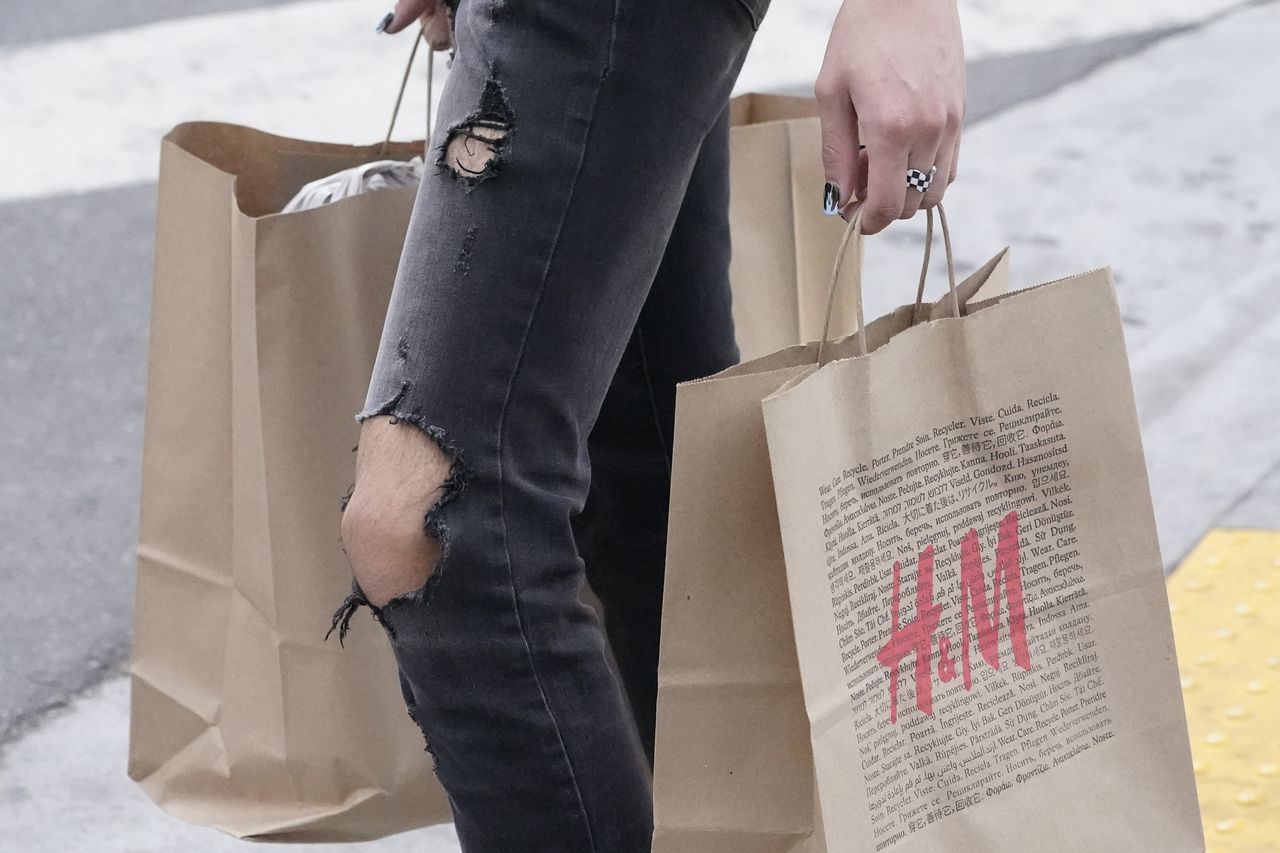After months of rising prices, some relief appears to be on the horizon.
Consumers, who have been hit with record-high costs for goods and serves due to rising inflation and interest rates, are paying less for a handful of staples.
According to the July Consumer Price Index, consumer prices rose 6.3% from a year earlier after posting an annual increase of 6.8% in June, the biggest jump since 1982. Experts say the numbers suggest inflation may be easing.
While many prices are still higher than a year ago, the report is welcome relief to consumers who have been getting squeezed lately.
Here’s a look at several categories where prices are actually dropping:

After soaring in 2021, chicken wing prices have finally dropped.
File photo by Dan Gleiter | [email protected]
Chicken wings
Good news for football fans this season – chicken wing prices have dropped to pre-pandemic levels.
According to the latest figures from the Department of Agriculture’s price index, wholesale prices of a pound of wings fell to about $1.68 in July, down from a high of $3.25 in May 2021. It’s the lowest price since May 2020, according to the report.
Demand for chicken boomed during the pandemic as more people turned to takeout and quick service foods like wings. By 2021, wing prices skyrocketed, forcing some restaurants and bars to temporarily remove them from menus. Some restaurants, including national chain Wingstop, made do by introducing bone-in and boneless chicken thighs.
Lumber
Pondering a home project? After skyrocketing lumber prices two years ago, a slowing housing market due to higher mortgage rates has led to lower lumber prices.
Markets Insider reports lumber prices recently fell as much as 4% to $465 per thousand board feet.
That’s a big drop from the record high of $1,733 per thousand board feet in 2021, and actually puts the price more in align with traditional pricing in the range of $200 to $600 per thousand board feet.
Travel
If you’ve been thinking about a getaway, now might be the time to book a flight.
Domestic airfares are expected to drop by 40% after the Labor Day holiday into early fall, reports Hopper, a travel booking platform.
Round-trip domestic airfare is expected to run around $238 on average, or about $142 cheaper than the highest rates this summer. International fares also will drop but not quite as severely at about 19% or an average of $754 roundtrip, which is about $179 cheaper than summer fares.
Furniture
As people stuck closer to home during the pandemic many purchased new furniture to refresh their living spaces. Now, spending is shifting to activities outside of the home and that has left many furniture retailers with extra inventory.
Bloomberg reports data from the Commerce Department shows furniture wholesale inventories are piling up as sales dropped for a second month. It said the government reported wholesaler furniture sales dropped 2.9% in June and stockpiles rose 2.6%.
Recently, home furniture supplier Coaster Fine Furniture announced in a letter sent to dealers it is rolling back prices by about 10%, according to Furniture World, an industry publication. As with many suppliers, Coaster had raised prices to compensate for supply chain issues and higher freight rates.
As shipping issues have eased, many furniture suppliers are paying less for ocean freight, something they are willing to pass along to dealers.

Gas prices rose this year to all-time highs but have started to come down.
File photo by Dan Gleiter | [email protected]
Gas
Anyone who owns a car sees notices prices dropping at the pumps.
Here in central Pennsylvania, the average price is about 34 cents lower than a month ago and hovering at the $4.21 a gallon mark. AAA recently said gas prices are falling “due primarily to stable oil prices and fewer drivers than usual fueling up.”
The pace of declines is certainly slowing down as oil prices have bounced up slightly, but the West Coast and Northeastern U.S. are areas that still may see gas prices decline, while the South and Midwest see the drop fade and potentially slight increases,” said Patrick De Haan, head of petroleum analysis at GasBuddy.
“In addition to falling gasoline prices, the average price of diesel has fallen below $5 per gallon for the first time since March, likely helping to cool off aggressive inflation numbers.
Thus far, Mother Nature has spared us from disruptions from hurricanes, but that remains a wild card as we head into the peak of hurricane season.”
Electronics
After consumers bought gadgets in record numbers during the pandemic, experts say habits have shifted as people are spending money on experiences, such as concerts and vacations. Many are also cutting back on discretionary spending due to high gas and food prices.
As a result, items such as televisions and computers are piling up on store shelves. Retailers such as Walmart, Target Corp. and Best Buy are marking down prices on consumer electronics if they want those inventories to move, Jason Benowitz, senior portfolio manager at Roosevelt Investment Group, recently told Reuters.
He added the retailers are in competition, not with each other but for essentials such as food and fuel.

Many clothing retailers are stuck with a glut of inventory as shoppers made fewer apparel purchases due to rising prices. Now many stores are slashing prices to get rid of merchandise. AP Photo/Damian Dovarganes
Clothing
Need some new duds? Luckily for you, retailers, left with a glut of clothing as consumer demand dropped due to higher prices, are slashing prices to clear inventory.
Abercrombie & Fitch and American Eagle Outfitters reported steep jumps in inventory levels, up 45% and 46%, respectively, from a year ago, according to CNBC. Retailers, including Target, Walmart and Gap, have announced price reductions to get rid of the backlog.
“The increasing levels of food and fuel inflation are affecting how customers spend,” said Walmart CEO Doug McMillon in a news release earlier this summer. “Apparel in Walmart U.S. is requiring more markdown dollars.”
In some cases, retailers like the Gap misjudged shopper’s needs and purchased too many of the wrong items, including active wear, which many shoppers stocked up on in record numbers during the pandemic. Gap reported net sales dropped 8% from a year earlier to $3.86 billion.
“In the near-term, we are taking actions to sequentially reduce inventory, rebalance our assortments to better meet changing consumer needs, aggressively manage and reevaluate investments, and fortifying our balance sheet,” said Katrina O’Connell, Executive Vice President and Chief Financial Officer, Gap Inc., in a news release.


